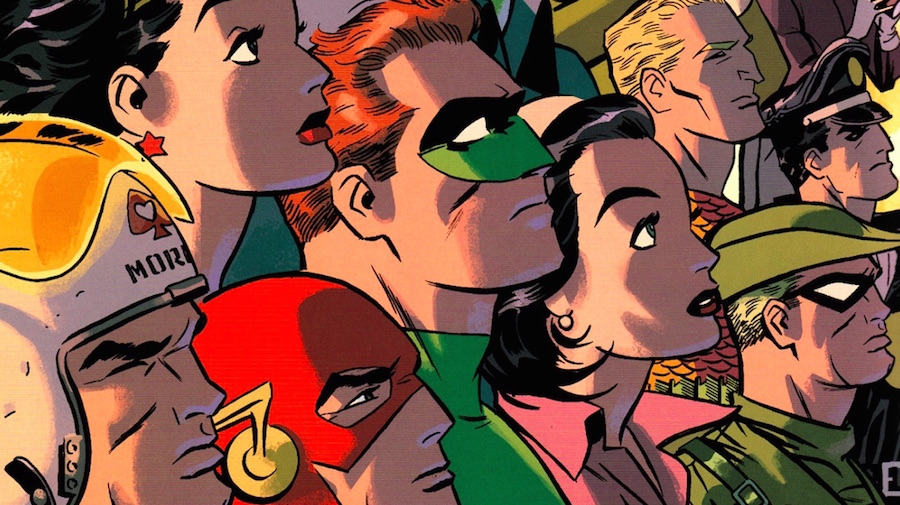“Darwyn always made me feel like when he was talking to me, he was 100% focused on me.
It’s because he was…he was like this with everyone. It was his superpower.
To live in that moment and give it his all.
His art was a physical version of this. It’s why his art reached so many people.
He was speaking directly to you and giving you every bit of himself. I’m going to miss you, man.”
– Shannon Eric Denton (Writer/Artist, Spectrum, Fleshdigger)
Eisner Award-winner Darwyn Cooke passed away last week at the young age of 53. His start as a comic book artist was brief and elusive. Instead, he found viable employment in the Canadian magazine market and then with Warner Bros. Animation. The position, which involved Cooke creating storyboards for Batman: The Animated Series, Superman: The Animated Series, and, eventually, Batman Beyond, allowed him to work on DC Comics’ licensed properties. And in 2000, DC Comics came knocking, kicking off Cooke’s career in comics. As a result, DC is heavily represented in Cooke’s list of credits which spans the past fifteen years.
As writer, penciller, and artist, Cooke penned and inked perennial characters such as Batman, Catwoman, Green Lantern, Jonah Hex, and The Spirit from DC Comics. With Marvel, he worked on Spider-Man and X-Force. Cooke often worked on single issues, yet one of his standout career projects has to be the six-issue series DC: The New Frontier (2004) which garnered the Eisner, Harvey, and Shuster Awards.
Cooke wrote the series in which DC Comics characters from the Golden and Silver Age joined forces to combat an alien threat that spanned much of the 1950s, a theme explored in many of the sci-fi films of the same time period represented in the story. Inspired by the Golden Age era comic book artists that included Jack Kirby and blending in his experience from animation, Cooke’s art style is colorful and evokes the sense of promise and hope of the atomic age. Daniel Corey (writer of Moriarty, Red City) reflected, “Darwyn Cooke’s work always displayed a distinct sense of purpose. Whether it was the hardened soul of Parker, or the optimistic Justice League of DC: The New Frontier, his characters always knew what they wanted, what they were doing, and each story had a unified sense of mission. We understood that when we read his work, and, as a result, we felt special and blessed.”
Much of Cooke’s work hearkened back to earlier comic book art and storytelling. Two years working as writer and artist on DC Comics’ The Spirit led to one of Cooke’s crowning achievements that stood out in his body of work: IDW Comics’ Richard Stark’s Parker series that Cooke adapted from Donald E. Westlake’s novel, The Hunter, into four graphic novel volumes (2009 – 2013). Cooke’s art style may look simplistic, but, in actuality, he channels the noirish motifs brilliantly into clean, singular colors that solicit a bold, yet minimalistic visual experience.
In really a short period of time, Cooke’s contribution to comics has had a far-reaching and lasting impact, especially his visual style which gave homage to the Golden and Silver Age of comics while adding his own graphic design expertise. I wish I had met him, or at the very least had attended a panel in which to listen to his journey working in the comics industry. Corey summed up well Cooke’s place: “I unfortunately never had a chance to meet the man, but it is apparent that he himself, as an artist, worked with intention and had a message he wanted to pass on to the world, of how it could a better place. We’ve heard you, Darwyn, and your message lives on.”

